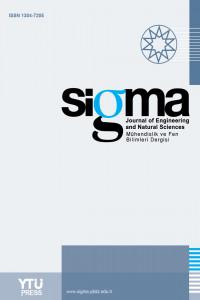Abstract
In this work the authors intended to improve the knowledge regarding to RC and masonry structures subjected to blast loading. A further aim is to describe and use the non-linear-finite element method through a comparison of RC building with and without infill wall.
In order to perform the models subjected to analysis, based on existing experimental studies of infill wall and RC columns, by using the FE method, the blast loading is simulated using conventional weapons for explosion model where it was generated with 1000kg of TNT explosive material at a distance of 4.6m.
For the finite element model of the building, bricks and mortar joints are represented by continuously cohesive elements and contact elements were used to simulate the adhesion and interaction between the blocks. The nonlinear behavior of the concrete and masonry were simulated using the Coupled Damage Plasticity methods. Simulation results showed that compressive and tensile strengths increase due to the strain rate effect and the initial stiffness increases.
Keywords
References
- ⦁ Feng Fu, (2009). “Advanced Modeling Techniques in Structural Design”, Wiley Blackwell, City University London.
- ⦁ Alex M. Remennikov and Timothy A. Rose (2005), “Modelling blast loads on buildings in Complex city geometries”, Computers & Structures, 83 (27), 2197-2205.
- ⦁ A.P. Mouritz, D.S. Saunders, S. Buckley, (1994). “The damage and failure of GRP laminates by underwater explosion shock loading”, Composites 25 431-437.
- ⦁ Pereira, M.F.P., Pereira, M.F.N., Ferreira, J.E.D., Lorenzo, P.B.: Behavior of damaged masonry infill panels in RC frames subjected to out of plane loads. In: Proc. of the 7th International Conference on Analytical Models and New Concepts in Concrete and Masonry Structures. Poland 2011.
- ⦁ Pereira, M.F.P.: Avaliação do desempenho das envolventes dos edificios face à acção dossismos (in Portuguese). PhD-Thesis, University of Minho, 2013. Department of CivilEngineering: Guimarães 2013.
- ⦁ Abaqus User Manual, Dassault Systems Simulia Corporation, Providence USA, 2013.
- ⦁ Rodríguez-Nikl, T. Experimental simulations of explosive loading on structural components reinforced concrete columns with advanced composite jackets, PhD Thesis, University of California, San Diego, 2006, p. 252.
Details
| Primary Language | English |
|---|---|
| Journal Section | Research Articles |
| Authors | |
| Publication Date | December 1, 2018 |
| Submission Date | January 18, 2018 |
| Published in Issue | Year 2018 Volume: 36 Issue: 4 |
IMPORTANT NOTE: JOURNAL SUBMISSION LINK https://eds.yildiz.edu.tr/sigma/


